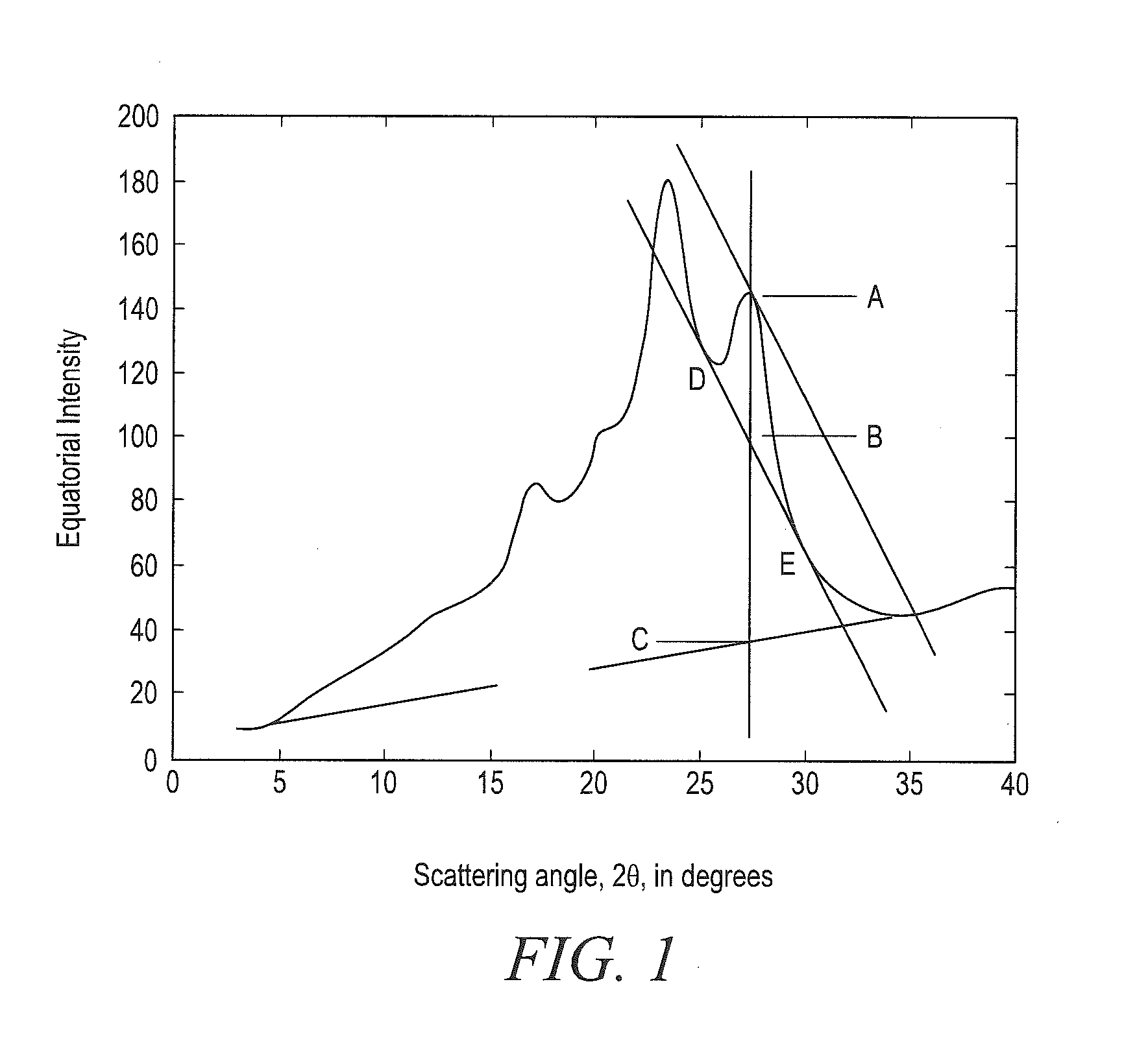Method for the treatment of aramid material and fiber, yarn, and fabric made thereby
a technology of aramid materials and aramid fibers, applied in the dyeing process, textiles and papermaking, etc., can solve the problems of difficult dyeing of aramid fabrics, affecting the degree to which the fiber may be dyed, and difficulty in giving such aramid fabrics the general appearan
- Summary
- Abstract
- Description
- Claims
- Application Information
AI Technical Summary
Benefits of technology
Problems solved by technology
Method used
Image
Examples
examples
[0044]In the Examples, the step of scouring, both in the separate and integrated type of treatment, was carried out in the presence of Tinoventin JU® at the conditions listed in Table 1.
[0045]In Example 1, the step of scouring was carried out separately and prior to the step of pretreatment. The step of scouring was carried out in a AHIBA™ Turbomat from Datacolor Ahiba, Switzerland, headquartered in Lawrenceville, N.J., USA. The step of pretreatment was carried out in water only, at the conditions listed in Table 1.
[0046]All Examples 1, 2, and 3 were dyed according to the following procedure (color royal blue):[0047]Set the dye bath with warm (30-40° C.) water and add[0048]70 g / l Benzyl alcohol[0049]1-2 g / l non-ionic dispersing agent[0050]Run for 10 minutes and then add[0051]1% Basic Blue 41 (dissolved in boiling water and acetic acid)[0052]Run for 10 minutes and then start to heat with 1.5° C. / min[0053]Add during the heating (between 40 and 80° C.) in 3 portions[0054]20 g / l sodium ...
PUM
| Property | Measurement | Unit |
|---|---|---|
| Temperature | aaaaa | aaaaa |
| Fraction | aaaaa | aaaaa |
| Fraction | aaaaa | aaaaa |
Abstract
Description
Claims
Application Information
 Login to View More
Login to View More - R&D
- Intellectual Property
- Life Sciences
- Materials
- Tech Scout
- Unparalleled Data Quality
- Higher Quality Content
- 60% Fewer Hallucinations
Browse by: Latest US Patents, China's latest patents, Technical Efficacy Thesaurus, Application Domain, Technology Topic, Popular Technical Reports.
© 2025 PatSnap. All rights reserved.Legal|Privacy policy|Modern Slavery Act Transparency Statement|Sitemap|About US| Contact US: help@patsnap.com

